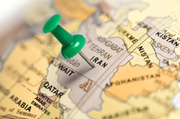Most of the crude exported from Saudi Arabia, Iran, the United Arab Emirates, Kuwait, and Iraq passes through the Strait of Hormuz. It is also the route for nearly all the liquefied natural gas (LNG) shipments from the world’s largest exporter, Qatar.
On Thursday, the head of Iran's Revolutionary Guards said the Strait of Hormuz will be “for all or for no one”.The US Fifth Fleet, based in Bahrain, is dedicated to protecting commercial ships in the area.
“The declared nominal throughput capacity of the Strait of Hormuz is about 14 oil tankers per day, or 17 million barrels per day, or about half of the world’s daily crude oil exports. If exports through it stop, the law of supply and demand would double oil prices to $160 per barrel,” Vladimir Rojankovski, investment analyst at Global FX, told RT.
The analyst added that if the Strait is blocked for one or two months, oil traders could panic and buy out all available crude futures, sending prices to $250 per barrel. However, Rojankovski expressed doubt that Iran would do that since the area is highly militarized.
Artem Avinov, leading analyst with TeleTrade, also predicts that oil prices could jump to $250 per barrel if the Strait of Hormuz is blocked by Iran. But he also notes that such a scenario is highly improbable. “I am skeptical about the possibility of the Islamic Revolutionary Guard Corps to cut off oil supplies through the Strait of Hormuz for several days or weeks. Even if Iran really acts, we are likely to see a quick economic or military retaliation, which will lead to the lifting of restrictions,” he told RT.
MA/4341658


























Your Comment